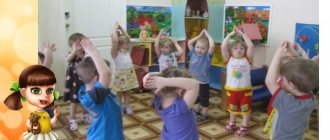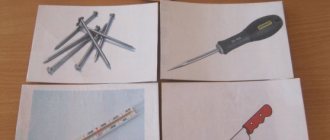Innovation for children is an introduced innovation that provides a better and more progressive learning process. Innovative games are created on the basis of innovative developments and ideas. The production is carried out by the well-known Russian company, which began its activities in 2004. The company's products are made only from natural raw materials and have all the required quality certificates.
Directions for innovative development of children
At the present stage of development of education in the Russian Federation, the need has arisen to introduce innovations into the learning process. There is a need to improve the level of preschool and school education. The main goal is to identify and develop creative abilities in schoolchildren. The introduction of innovation helps to reveal the inner potential and identify the abilities of children.
Important. Innovations for children will help in preschool education, and in the future they will help to identify abilities in the exact sciences or humanities.
Popular innovative games for children
Interactive children's sandbox
It is a training complex for the best development. The sandbox consists of a laptop, a wooden structure, a projector and a depth sensor. The image on the sand may change; to do this, you must select the appropriate mode. With the help of the sandbox, educational and psychological classes are held that comply with the educational standard of the Russian Federation.
The sandbox has four modifications:
• islet;
• clearing;
• house;
• diamond.
The sandbox is a leader among innovative developments. During classes, children play with sand, which allows them to develop fine motor skills and relieve stress. Sandbox activities help develop: thinking, imagination, memory, attention and speech.
Interactive complex for children “Play and develop”
Developmental complex - an innovation for preschool children. Modern children are quite familiar with computers, many use them every day. Using the complex, you can conduct training in a playful way. Preschoolers remember better, use and develop muscle memory. Using the monitor's touch screen, kids can play various games. Innovation will help teach people how to cross the road correctly and start learning foreign languages. The main feature of the innovation is the learning process while playing.
"Big Chemical Laboratory"
A fun innovation for kids. The game consists of chemical elements, laboratory equipment, and necessary reagents. Kids get acquainted with chemical reactions and see the interaction of reagents. The learning process will become interesting and informative.
Set "Fire, water and copper pipes"
• Consists of 22 exciting experiences. The innovative game will allow you to learn a lot of new and interesting material.
• Fire and Water. Children will learn in detail about the interaction of the two elements.
• An unpredictable ending to innovative experiments that will amaze not only schoolchildren, but also adults.
The innovative set is safe, but it is better when schoolchildren study under the supervision of elders. Conducting experiments is quite interesting and exciting, so parents will not be bored. The main advantage of all components is natural material, it is non-toxic and harmless.
With this innovative game, children will gain interesting knowledge and skills.
Innovative kit “Young Perfumer”
Created for lovers of fragrances and travel. The young chemist will be able to reproduce the best aromas of Italy and recognize the popular smells of Venice and Tuscany. To do this, you need to correctly mix several components from the innovative set. The finished perfume can be used independently or given to close friends. Thus, children will feel like real creators of exclusive fragrances.
Main features of the set:
• it is possible to create any signature perfume at home;
• a professional set will allow you to mix different oils and allow you to plunge into the world of perfumes;
• the instructions describe in detail all stages of perfume production;
• innovation will make it possible to create more than 25 popular flavors of Italy.
• such activities contribute to the future choice of profession.
Innovation for children, set “Candle Studio. Sea Mystery"
Using the play set you can create scented gel candles. The set includes: multi-colored decorative sand, glass glasses, accessories, decorations and gel used for combustion.
The game will help develop hand motor skills; its components are absolutely safe. The candle will become an interior decoration or a good gift.
Set for making exclusive soap “Soap Workshop”
It will help to interest schoolchildren in such experiments. Helps develop motor skills and perseverance. Parents can spend more time with their children conducting experiments. After experiments, you get beautiful figures from natural soap. Soap can be stored in the bathroom; it will remind you of the work done and motivate you to further experiments.
The game includes the following components:
• glasses for soap base;
• natural dyes and flavors;
• ceramic bowl;
• soap mold;
• chopsticks and gloves.
Innovation for children, set “Colored polymer slimes”
Thanks to chemical experiments, children create new bright toys. The game will entertain and put you in a cheerful mood. During the experiment, kids will see how multi-colored slimes and worms appear. This will attract further educational research, as well as arouse interest in chemistry and the environment. Promotes motor development.
Young chemists will make their own toys to play with. Joy will have no boundaries.
The composition is absolutely safe and includes the following components: colored solution, worm activator, container for liquids, pipette, measuring spoon and gloves.
Innovation for children, “Taming the Fire” set
The experiments will involve fire, so children should not be left alone, without parental supervision. Young chemists will gain a lot of new knowledge during the game. Experiments will make it possible to learn about the laws of the elements, and schoolchildren will learn to assimilate new and necessary information.
The house will turn into a laboratory where fire will be tamed. The game includes 6 experiments, consists of the necessary reagents, laboratory equipment and detailed instructions for use.
Consultation for teachers “Innovative didactic game for preschoolers”
Elena Esina
Consultation for teachers “Innovative didactic game for preschoolers”
In Russia, with the introduction of the federal state educational standard for preschool education on January 1, 2014, software and methodological support for preschool education of a new generation is being introduced, aimed at identifying and developing the creative and cognitive abilities of children. The Federal State Educational Standard is aimed at game-based learning activities for preschoolers . What is the main innovation in preschool education .
In accordance with the Federal State Educational Standard, the child’s personality is brought to the fore and now all preschool childhood should be devoted to play. The game has many educational and educational functions.
preschool children is not effective without games, but lately the game has been “going away”
from kindergarten, children practically do not
play . There are several reasons for this, although now they are trying to direct the education of preschoolers in a playful direction .
Play is the most free activity possible; restrictions arise only within the limits of the role that the child plays ; he takes these restrictions voluntarily and this gives him pleasure.
Play is the main content of the life of a preschool and is his main activity. Through play, children receive significant information that comes to them without violence or pressure.
The main activity of preschool children is play , during which the child’s spiritual and physical strength is developed: his attention, memory, imagination, discipline, etc. In addition, play is a unique , characteristic of preschool age.
Children develop according to their age-related abilities. If a three-year-old child is given a piece of paper and a pen and asked to write a letter, he will not do this because he has not been taught this. Each age has its own games and tasks.
For example, children from three to five years old need games aimed at developing motor skills, developing auditory and visual attention, developing memory, developing thinking, developing creative imagination, developing speech, active games, role-playing and directing games.
And children from five to seven need games aimed at developing auditory attention, developing memory, developing visual attention, developing thinking, developing creative imagination, developing speech and active games.
Conventionally, all children's games can be divided into two large groups: role-playing and didactic .
Role-playing games include games on everyday topics, industrial games, construction games, theatrical games, and entertainment games.
include games with rules : verbal didactic games , games with objects and toys, printed board games, educational games, musical didactic games and outdoor games .
Many didactic games encourage children to transform into various objects of the man-made world and describe them: shape, color, size, what material they are made of, etc. Children play the role of experts, answering questions.
Didactic games provide an opportunity to develop processes such as attention and memory in students. Game tasks have a positive effect on the development of ingenuity, resourcefulness, and intelligence. Many games require not only mental, but also volitional efforts: organization, endurance, and the ability to follow the rules of the game. The main thing is that the game does not distract from learning, but, on the contrary, contributes to the intensification of mental work.
So, the development of innovative activities is one of the strategic directions in preschool education .
An innovation game is the activity of creating a new game, suggesting that the game will carry knowledge exchange and demonstration of results.
It is used for planning and identifying knowledge in a group of any age at the beginning of the year, since children love to play at any age , and a new game will interest them even more.
In our kindergarten we play various didactic games .
Examples of didactic games :
Second junior group.
Game for memory development.
You will need five toys. The teacher places toys behind the screen. Then he moves it aside and invites the children to remember the order of the toys. After the children have memorized, the teacher behind the screen swaps the toys (first one, then two)
. Children must guess what has changed and restore the previous order.
Middle group.
Didactic game “Where do you live?”
The teacher chooses pictures of their hometown, village, village where they live. Children are asked to break into small groups, choose a picture and together tell everything they know about this picture. At the end of the game, children choose the best story.
Senior group.
Didactic game "World of Wildlife"
.
You will need pictures of wild and domestic animals, a sheet of blank paper. First, the teacher talks about animals that are considered wild and explains why they are called that. How to identify a pet, what features they have. Then the children are shown illustrated examples of wild and domestic animals, and are told about the habitat and lifestyle of each. The seasonal features of their residence are briefly described. This story takes no more than 8 minutes.
Afterwards, the children are given sets of cards with wild and domestic animals. The task is to divide animals into two types.
As soon as the children have completed the task, they depict the animal they like on pre-prepared sheets.
The lesson ends with a game: the teacher reads a story in the text of which various animals are found; when children hear the name of an animal from the wild, they clap their hands; when a domestic animal is named, they do nothing. The story should take 5-8 minutes.
Preparatory group.
A game for the development of the phonetic-phonemic side of speech.
You will need cards with pictures (four on each card)
. The teacher names any vowel sound, the children take turns pronouncing the names of their pictures out loud and find the one they need. If the picture is named correctly, the presenter allows you to cover it with a chip. The one who closes their pictures first wins.
All of the above allows us to assert that in the game the child learns to fully communicate with peers, learns to obey the rules established by the game, psychological processes intensively develop in the game, new motives and needs are formed (competitive, gaming motives)
.








